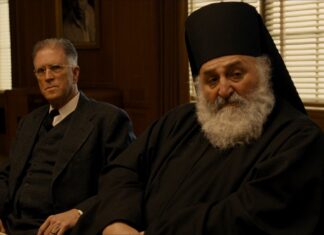WASHINGTON — In the late 1920s, when the Soviet Union embarked on the task of rapid development of its industry, it quickly realized the money for implementing the large projects envisaged was lacking. Industrialization required a lot of financial resources, and one of the options with which the Soviets tried to fill the gap was the sale of masterpieces from the USSR’s museums, particularly from the main museum of Leningrad (modern day St. Petersburg), known as the Hermitage.
Several Armenians played an interesting role in this enterprise, both in the USSR and outside. Some sources suggest that between 1928 and 1935, the Soviets sold 24 thousand artworks, including 2,800 paintings from the Hermitage. British-American historian Dr. Jonathan Conlin noted that the Armenian billionaire and art collector Calouste Gulbenkian became the first “to go shopping at the Hermitage Museum.”

“In total, he paid 17 million dollars in today’s values to the Soviet Union,” noted Dr. Conlin in an e-communication. Gulbenkian’s main competitor, who also purchased artifacts from the USSR, was an American businessman and benefactor, Andrew Mellon, who also served as the US Secretary of Treasury when the transactions were taking place. Dr. Conlin, who authored a monograph about Gulbenkian, tracked differences between the approaches of Gulbenkian and Mellon in selecting artifacts from Russia.
“With Mellon, I very much have the sense that he was basically ticking famous artists off a list that other people have written. In the case of Gulbenkian, he does go after some very well-known artists like Rembrandt, but he also acquires examples of silverware by 18th century French silversmiths as well as some other pieces which by no means were obvious choices,” noted Conlin, adding that the choices he made really do reflect that the Gulbenkian collections were formed by Gulbenkian himself.
Gulbenkian acquired some Armenian artifacts. However, the core of Gulbenkian’s collection represented masterpieces like “Pallas Athena” and “Titus” by Rembrandt Harmenszoon van Rijn (17th century), “Helena Fourment” by Peter Paul Rubens (17th century), Dirk Bouts’ “Annunciation” (15th century), and the sculpture of the Greek goddess “Diana” by French sculptor Jean-Antoine Houdon (18th-19th centuries).









